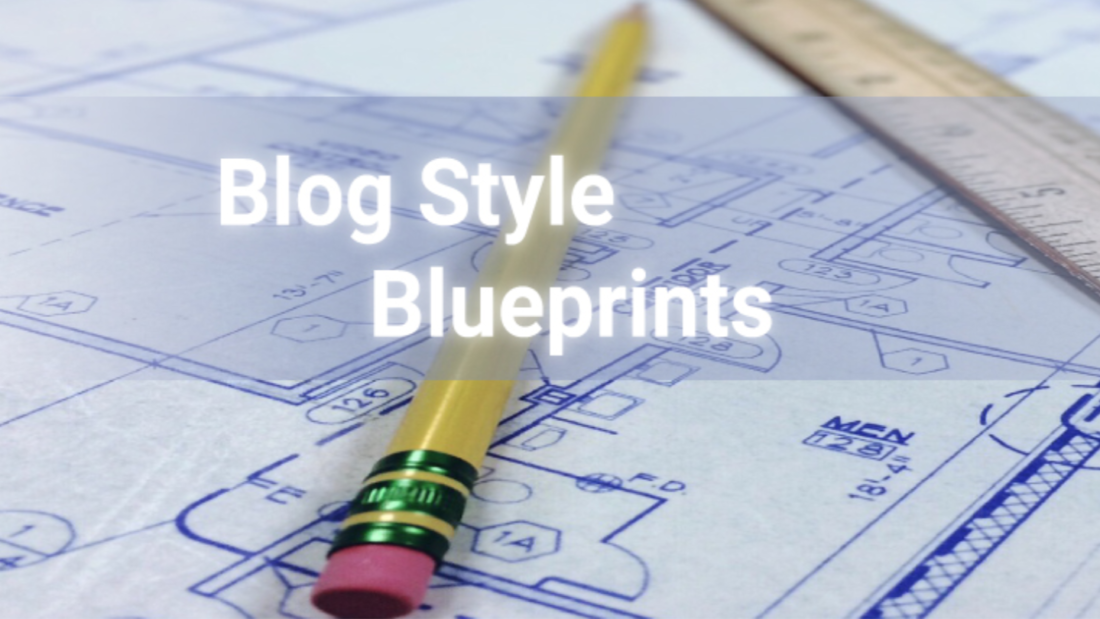What really makes a blog worth reading and sharing?
The answers can be found over 1000s of articles across the net making content marketing a game of ‘Keeping Up With The Jones’. Popular blogs are quickly copied, made into teaching tools and eventually reimagined into something else.
The search for a tried and true formula seem daunting. I recently went on a quest for the perfect blog blueprint and I’m excited to share my summary and findings with you. Among this small but essential collection of well-researched articles to offer a bit of perspective.
Which perspective should you trust? Well, if you are like me, you’ll lean on a few trusted friends for the answer. You’ll design part based on what the research tells you and part with your own carefully considered style.
So let’s introduce you to your new friends.
They are blog writers who are brand owners, freelance writers, marketers, and experts in their industries just like you. They are just as determined to figure it out and share the insight.
I found the following articles helpful in building my own Blog style and content schedule and I’ve summarized their core findings If you feel their direction speaks to you, go directly to their article for the details.
What the Hard-Working Business Next Door Might Say:

‘My Aquarium Club’ feels they have blog writing down to the word count:
At its heart, they suggest attention to formatting matters. Your goal should be a long, detailed post of 1600 words with 200-500 word sections and to be thrifty with images. Placing one high-quality image at the top and more only if necessary.
To tap into Brand identity success:
- Start with top-quality image = 30 times more views.
- Write longer, in depth blogs (1600+ words) = 30 times more views.
- Increasing the title length to 10-12 words = 22 times more views.
- Add subtitles only after 200-250 words = 7 times more views.
- Write subtitles as separate lines of text (not inline subtitles) = 4 times more views.
- Write longer paragraphs (70-120 words each) = 60% more views.
What the Persuasive Salesman Might Say:

‘Social Triggers‘ has consolidated their knowledge of Business blogging for your sales success.
Social triggers provide a handy infographic that maps out a repeating structure of headline, content, call-to-action leading the reader down a path of engagement and action. The detailed work provides a persuasive call to buy, subscribe or otherwise take the 1st step to the writer’s ultimate goal. It’s an effective style we are used to seeing in list building and landing pages.
- Attention grabbing Headline
- Offer short key insights
- promise to solve an issue
- offer an emotion evoking the story
- provide clear, easy to implement advise
- ask the reader to your CTA, likely to subscribe or buy
To write like a salesman:
What an Analyst Might Say:

If you have the data, the direction is not in dispute and ‘Postcron’ knows it.
Postcron dives deep into statics for support. Be it rich quotes by influences, eye-mapping studies or Google Insights, this article leaves no answer to instinct. They discovered that the content must 1st capture the reader’s attention in 10 seconds and answer their question “Is this useful to me” Their approach is backed with data curated summaries, influencer wisdom, graphs, and more data.
If you also think like an analyst you’ll love these facts:
- STAT: People on a site for 30 seconds, tend o stay[Neilson]… so the first 2 paragraphs must contain the answer the reader is looking for… in an organized, easy to scannable plan meant to be “read” from start to finish quickly.
- QUOTE: [Buzzfeed] “Find the commonalities of your community, what you think can unite them under the same headache
- STAT: Headlines need to intrigue and those with negative words got 63% more clicks [Outbrain,] …use this Headline formula:# Number + adjective + keyword (the answer to their need) + rational aspect + promise
- A Headline should be tweetable (and properly reflects what a reader will learn
- FACT: Google increased the font size of the titles listed in search engine results; therefore, they’ll only display the first 40 characters of your title.
- INFLUENCER: The perfect length of your post is the amount of content needed to get the concept [Neil Patel] across be it 250 words or 2000
- FACT: For seo: keep keyword density in your title and headings (i.e., in H1, H2 and H3.), and in the permalink.
- STAT: Articles that are in the top 10 results produced by Google’s search engine have at least 2000 words. Whatever the keyword more is more effective.
- STAT: the ideal reading time should not exceed 7 minutes, which is equivalent between 1600 and 2000 words
What Your Busy Older Sister Might Say:

‘Evolve Design‘ believes the answer is hidden in a KISS
Keep It Simple S_____ If the content is simple and easy to read than how it is presented is less important. The primary goals should always be to get return visits. Keeping content creation simple encourages consistently and that is essential.
- K: KEEP the page clean with a clear design and hierarchy
- I: Think I: make sure new visitors know exactly who you are, what your blog is about within the first few seconds of landing on your page.
- S: SUPPORT Readability. Your text size should be at least 14px and easy to read. No fancy fonts. Create a new paragraph every four or five lines to give readers a break.
- S: Invite people to SUBSCRIBE e to your blog.
What Your Charismatic Teacher Might Say:

‘Hubspot‘ know the importance of brand, brand personas, and writes within it
Hubspot knows there is no room for the ordinary. A long time authority on ‘ inbound marketing techniques’ they speak mostly to how to construct the content in a way that is well matched to your client personas. They have many articles, and many supportive tools written by several copywriters all with a focus on clearly scannable content that appeals to your reader’s needs for the information. Their focus is to style and the appreciation that style takes many levels of edits. Here are a few of their key points:
- Choose the topic and drill down on a specific need.
- In the intro paragraph: describe the problem the reader may be having in a captivating way.
- Essential tags across your entire site should be limited to 20 tags so chose only a few for each blog.
- Organize the content into — sections, lists, tips, whatever’s most appropriate. But it must be organized!
- Edit for clarity of message, SEO, headline size to 65 or fewer characters, change starting sentences to actions verbs such as “Learn,” “Read,” or “Discover
Before You Get Writing…
Writing a Blog that captures the attention of the right group of readers is not easy. Insights are being made every day into how to blog and hold the attention of your desired audience. My journey for the answer has introduced me to several styles and schools of thought. The key is that you have friends to help simplify and inspire the process. So develop a style that works for you.
And share your posts with me. I would love to see what you come up with.
My Quest, My Style
My five gems from this quest for blog-writing treasures
- What is ‘Right’ today may not be in the future? So be aware of changes but true to what your reader values.
- Search engines reward long, well-researched content. It takes more time for the copywriter but statistically, readers appreciate content designed with them in mind.
- Headlines need to stand out and the intent must be clearly apparent. No misleading or abstract concepts work.
- Write, organize, edit for 1) clarity 2) search engines 3)shareability always.
- Start with a personalized brand style guide that takes into consideration 10-20 core themes, reader personas and business goals. Always begin with it in mind.
Tell us from the contact page


